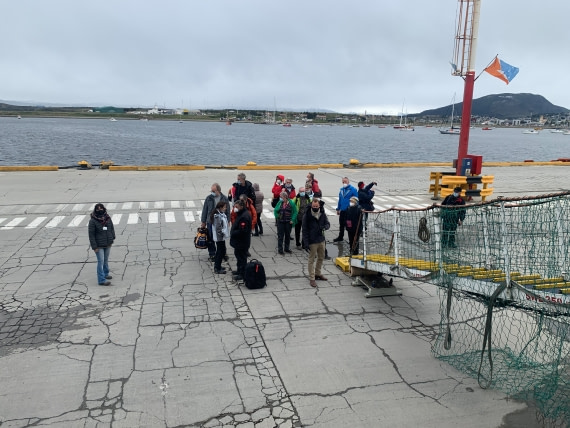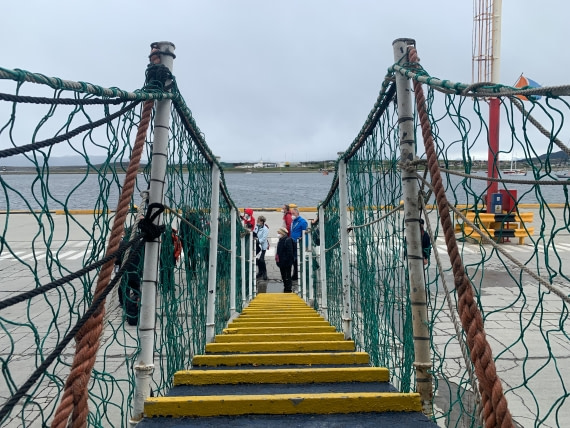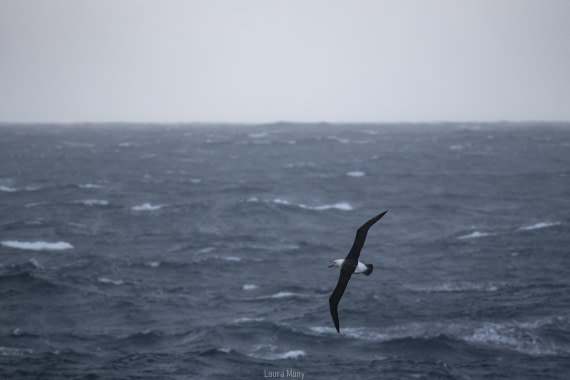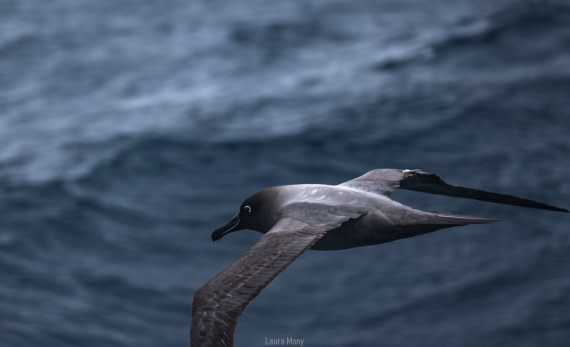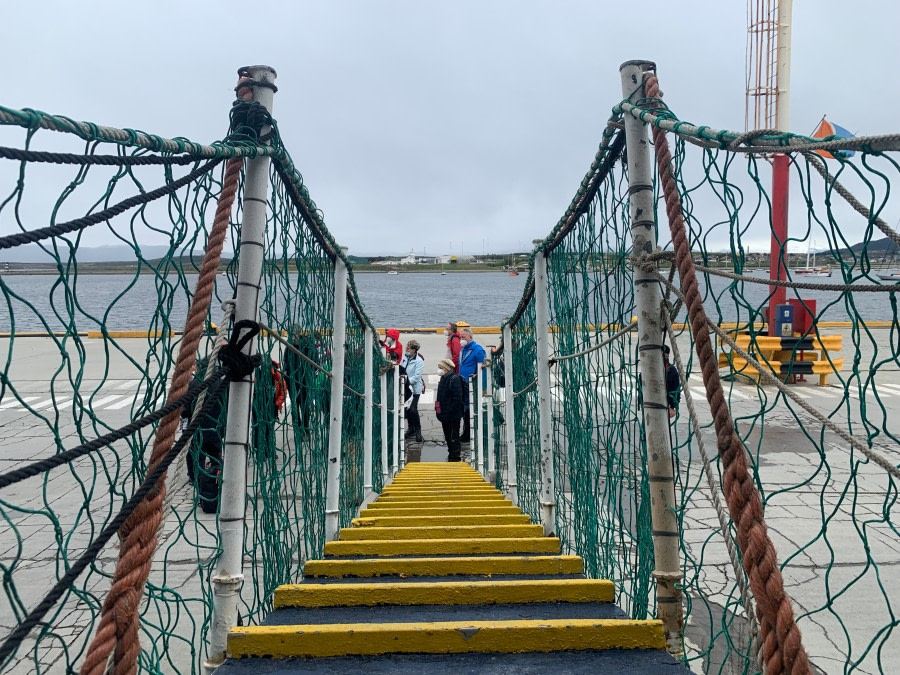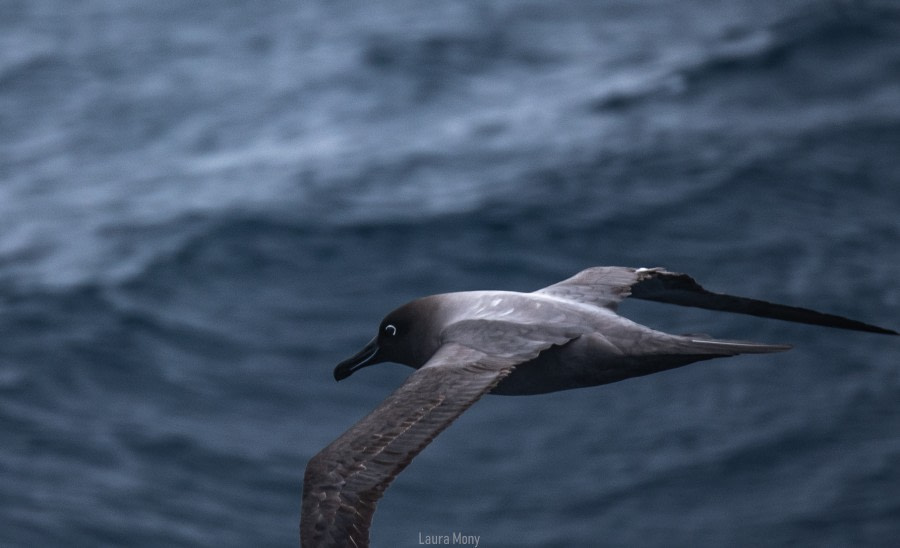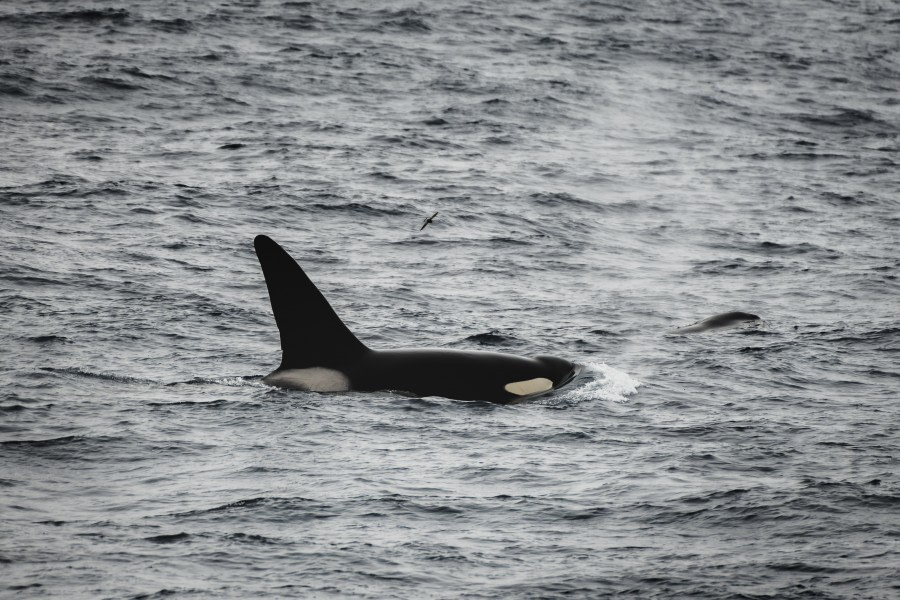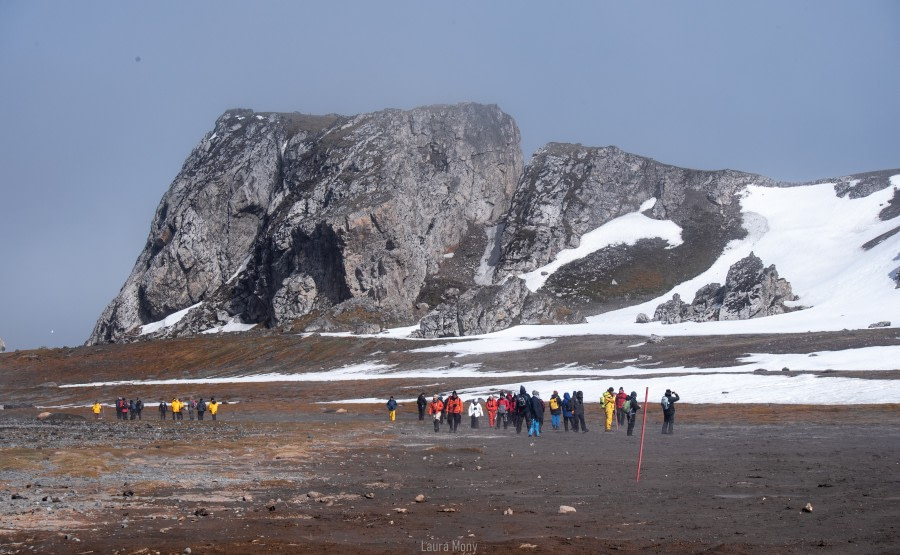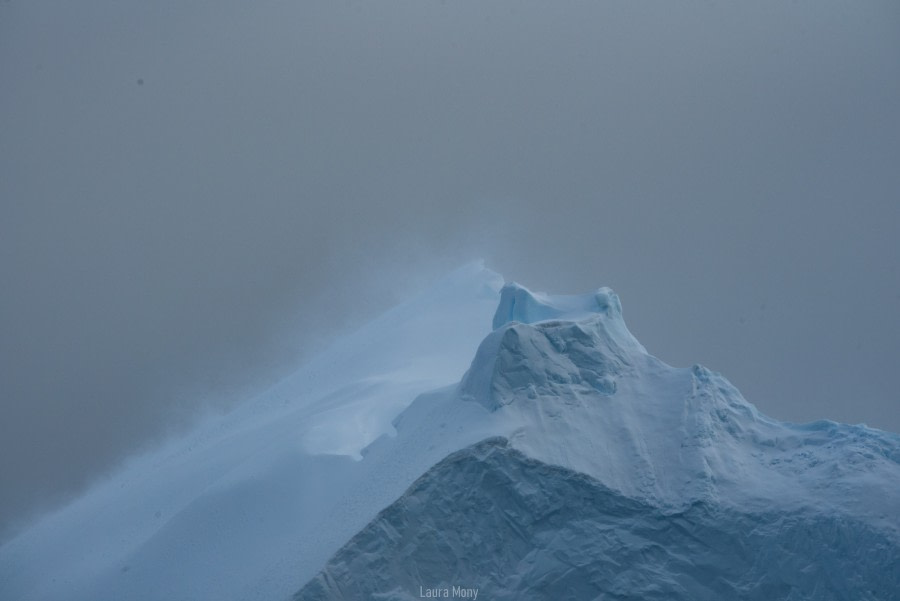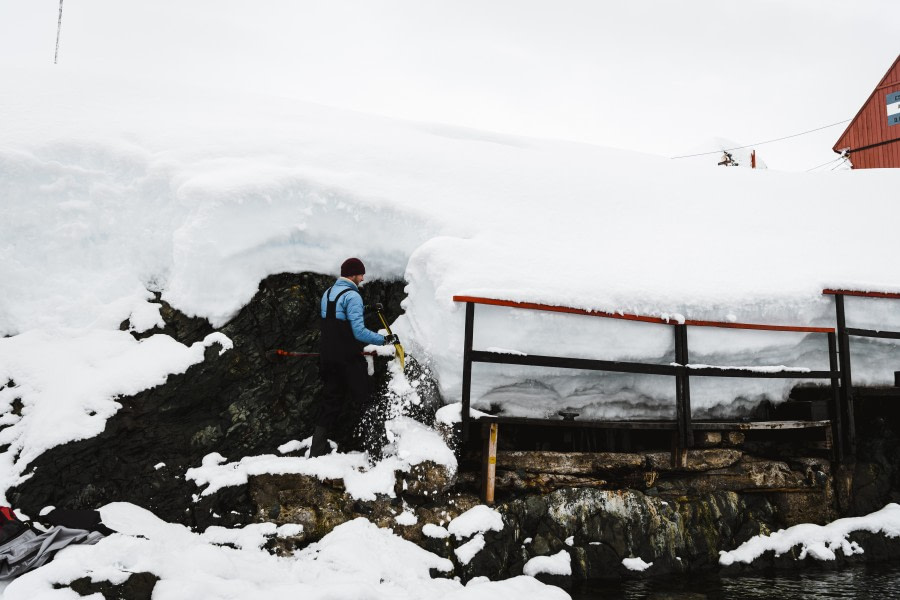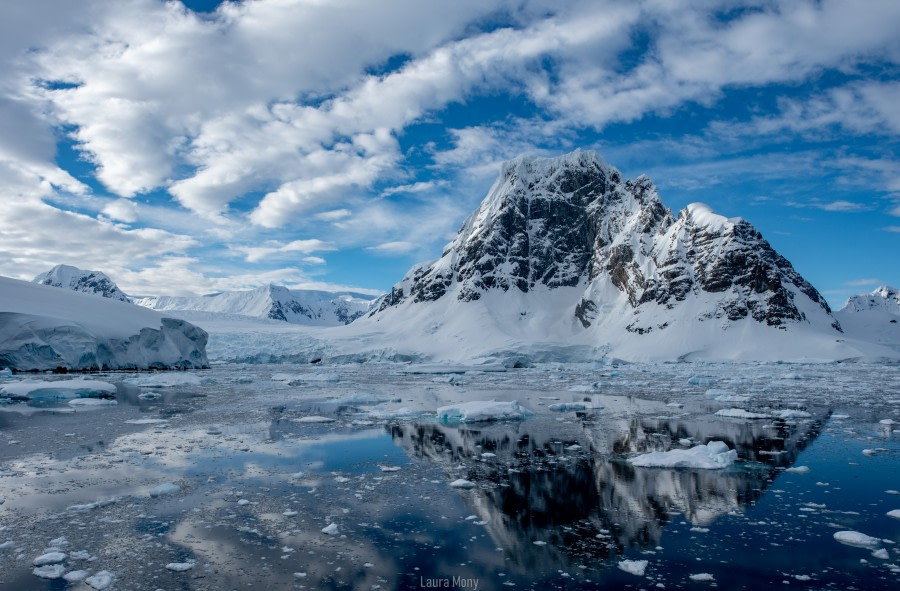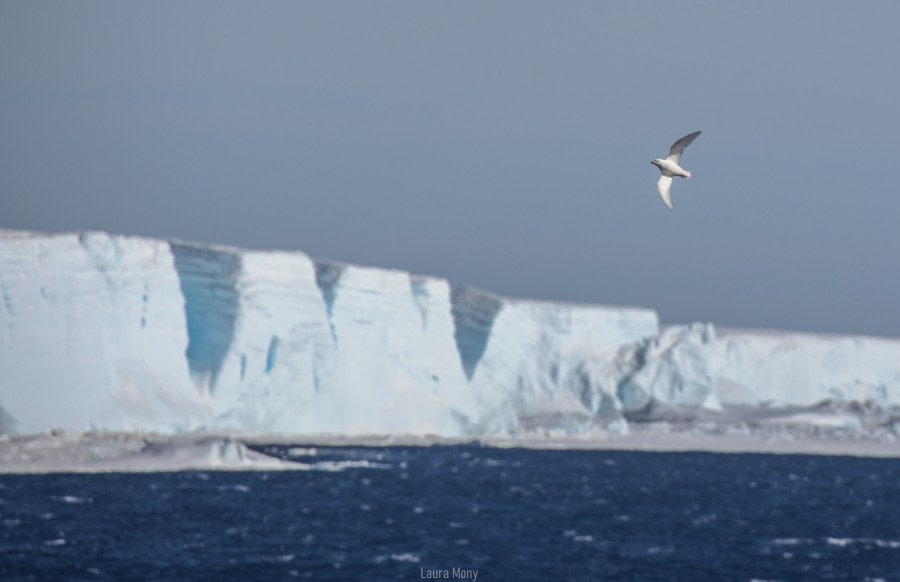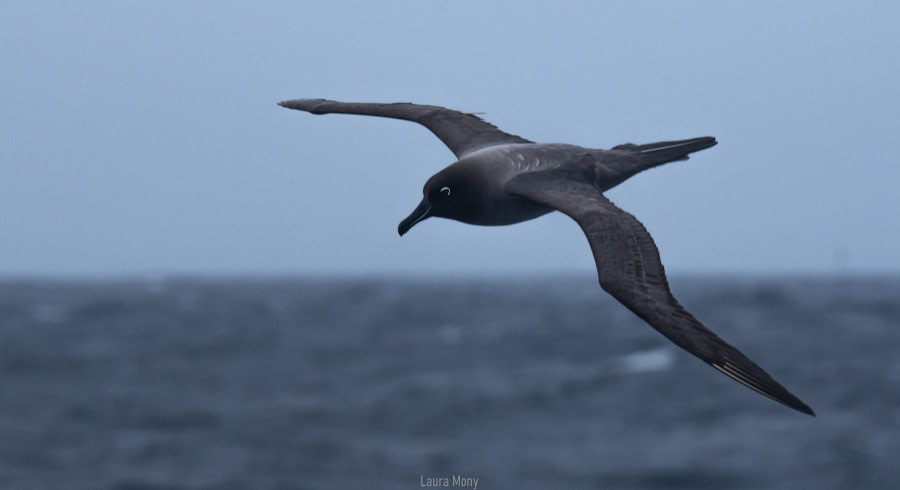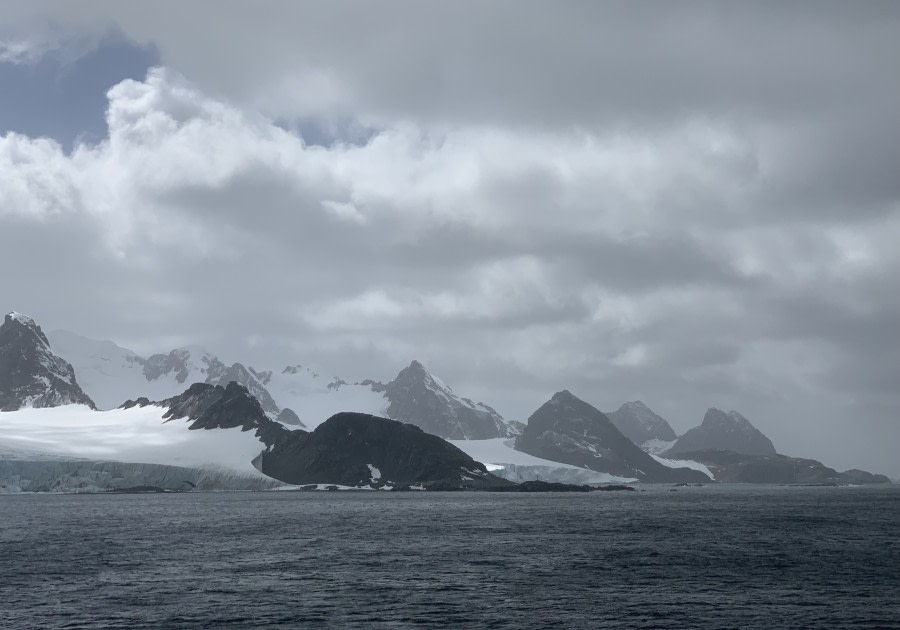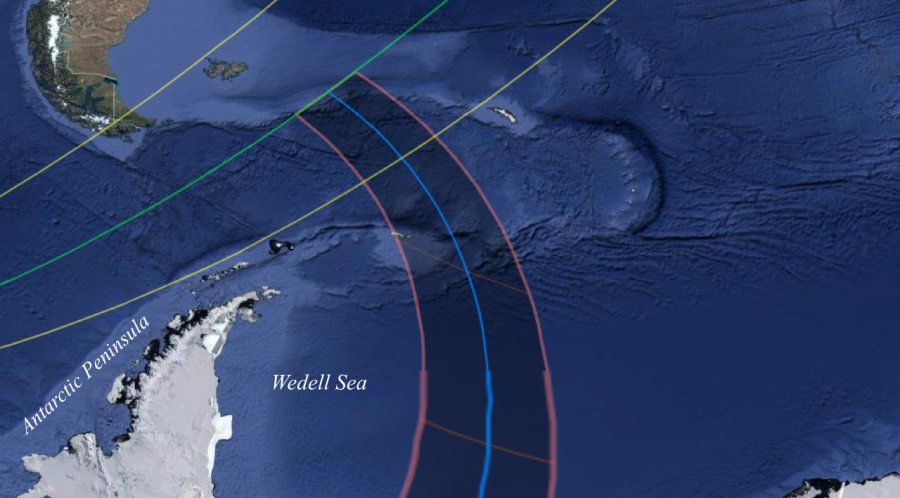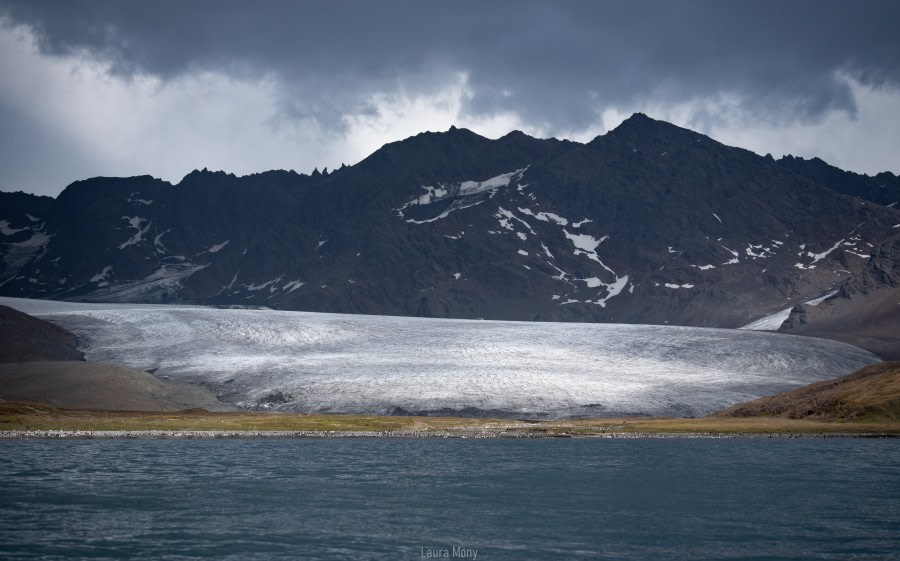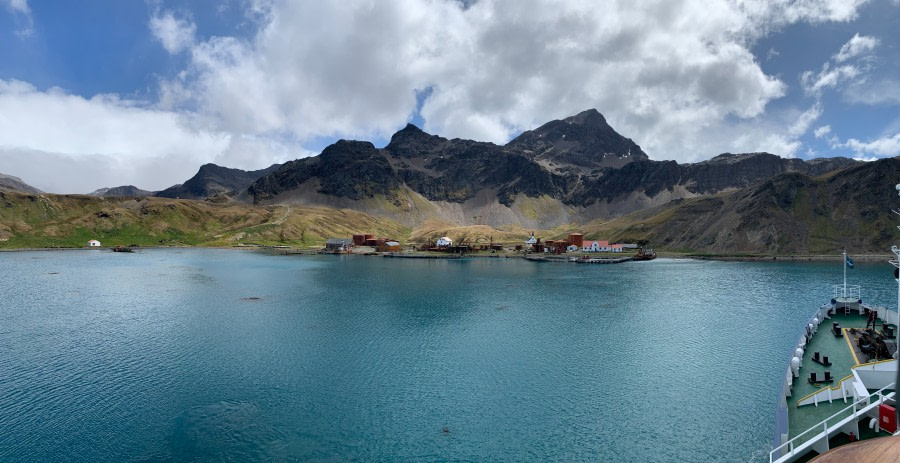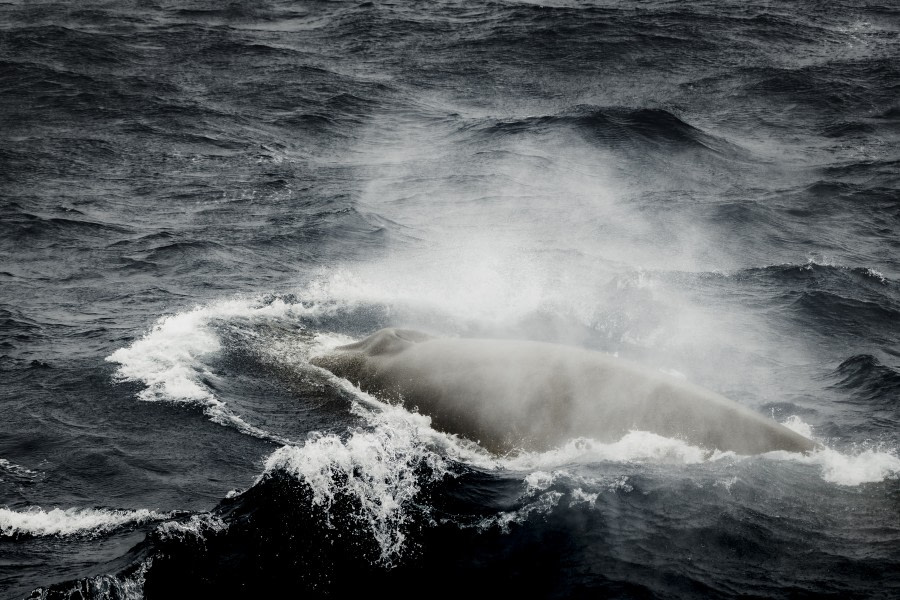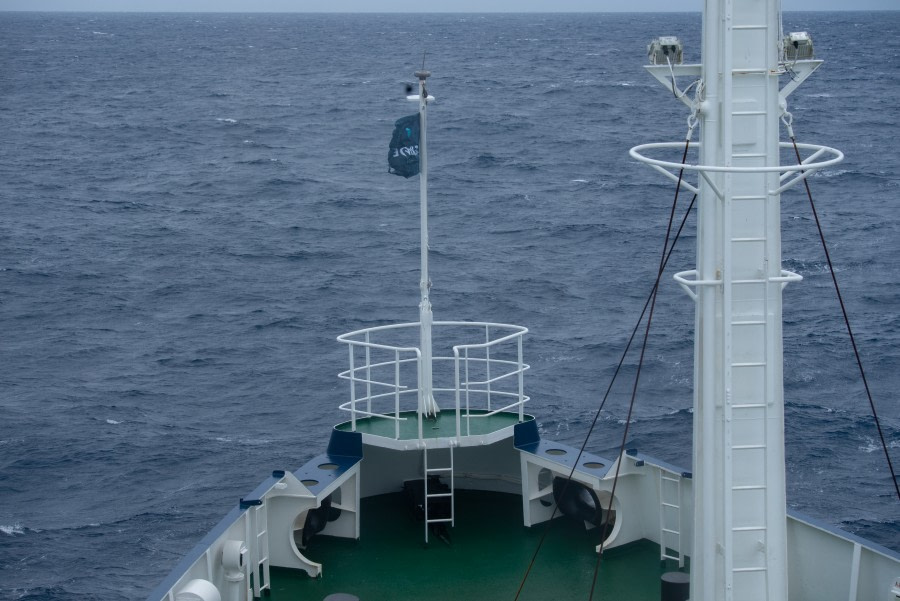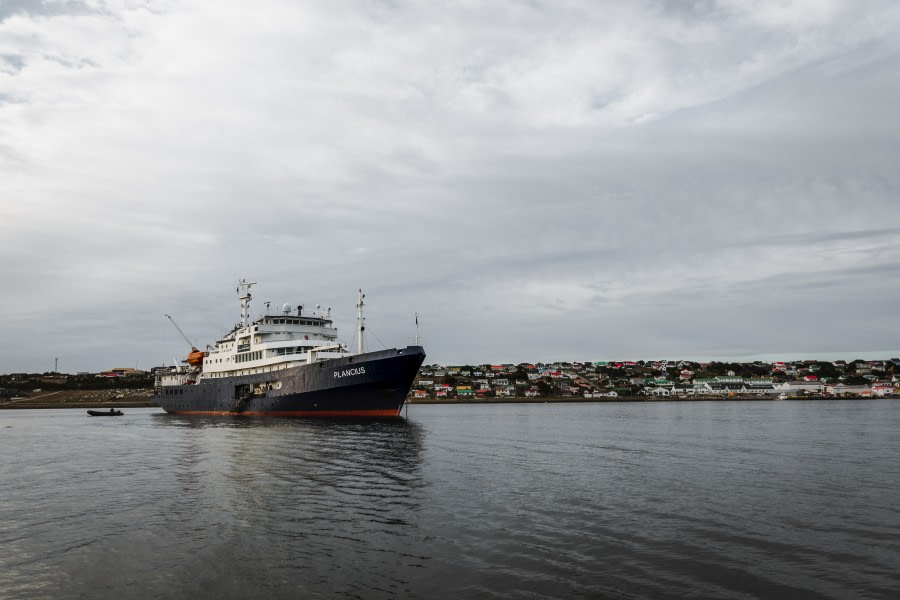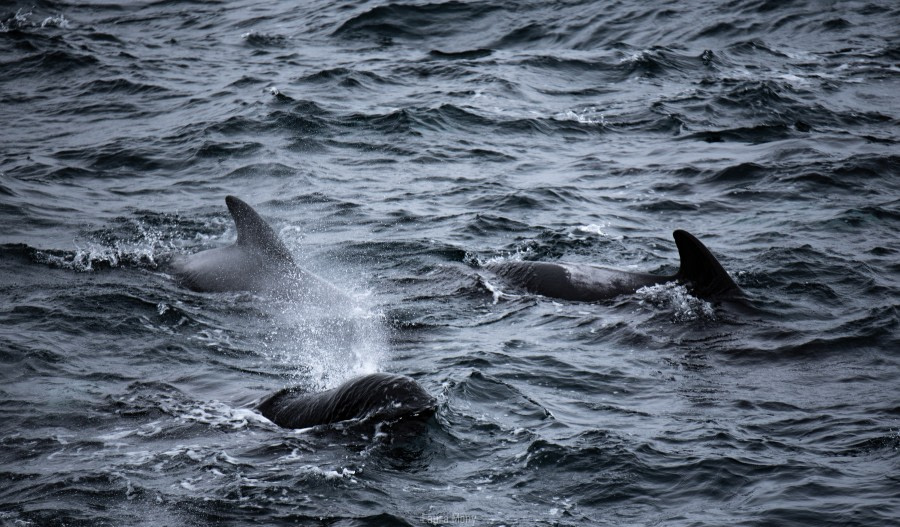| Fecha: |
07.12.2021 |
| Posición: |
53°38.2'S / 036°30.1'O |
| Viento: |
N 7/8 |
| Clima: |
Nublado |
| Temperatura del Aire: |
+4 |
Después de nuestras aventuras en Georgia del Sur, todo el mundo estaba un poco cansado, y nuestro día empezó tarde, en consecuencia, no hubo despertador, sólo una breve llamada para desayunar alrededor de las 8 de la mañana. Nada más salir de Georgia del Sur, la noche anterior, abandonamos la protección de la isla y, poco después de las 11 de la noche, empezamos a sentir el fuerte viento y el confuso oleaje del océano abierto. La mañana fue difícil para muchos de nosotros y para la tripulación, ya que el barco se balanceaba y cabeceaba fuertemente, dado el estado del mar y los vientos de proa. Seguimos avanzando lentamente a unos 7-8 kts hacia nuestro próximo destino, las Islas Malvinas, navegando por el borde norte del Mar de Scotia. A pesar del movimiento del barco, tuvimos encuentros con algunas Yubartas y un sorprendente avistamiento de Rorcuales comunes alimentándose. Como íbamos un poco adelantados, el capitán se tomó el tiempo necesario para dar la vuelta al barco y acercarnos a las hermosas criaturas marinas que mostraban comportamientos cautivadores. Permanecimos unos minutos alrededor de las ballenas antes de volver hacia el norte, en dirección a las Malvinas. Tormentoso y frío, el mar de Scotia es la zona de agua situada entre Tierra del Fuego, Georgia del Sur, las islas Sandwich del Sur, las islas Orcadas del Sur y la península Antártica. Para muchos, está considerado uno de los lugares más salvajes de la Tierra. Todos estos grupos de islas se asientan sobre la dorsal de Scotia, que enmarca el Mar de Scotia por el norte, el este y el sur, mientras que el borde occidental está enmarcado por el paso de Drake. El Mar de Scotia tiene una superficie de unos 900.000 km2. Aproximadamente la mitad del mar está por encima de la plataforma continental. Debe su nombre al Scotia, el buque de expedición utilizado en estas aguas por la Expedición Antártica Nacional Escocesa (1902-1904), bajo el mando de William S. Bruce. En Argentina, el Mar de Scotia se considera parte de una zona conocida como "Mar Argentino". A pesar de las duras condiciones, las islas del Mar de Scotia mantienen vegetación y se describen como la ecorregión de la tundra de las islas del Mar de Scotia. Estas zonas albergan vegetación de tundra compuesta por musgos, líquenes y algas, mientras que aves marinas, pingüinos y focas se alimentan en las aguas circundantes. Las islas del mar de Scotia también albergan fauna como cuatro especies de albatros, cinco especies de aves que permanecen en las islas, seis especies de pingüinos y un número similar de focas. El arco de Scotia es una región geológicamente muy activa y recientemente se han registrado terremotos de hasta magnitud 7,7, así como erupciones volcánicas.
Durante el día tuvimos diferentes conferencias, cuatro en total. Una sobre la vida y expediciones de Ernest Shackleton (en inglés y alemán) a cargo de Eduardo, otra sobre aves marinas impartida por nuestro experto ornitólogo y jefe de expedición Martin en inglés, otra sobre aves marinas en alemán a cargo de Steffi y al final del día, una sobre la caza de ballenas en Georgia del Sur, a cargo de Pippa. La conferencia sobre Shackleton consistió en un breve relato de los cuatro viajes que Shackleton realizó a la Antártida, a bordo del HMS Discovery, la expedición Nimrod, la expedición Endurance/Aurora y la expedición Sch ackleton-Rwett. Al final, Eduardo habló de las opiniones encontradas de los exploradores que favorecían o desacreditaban la capacidad de Shackleton para organizar expediciones. Ambas charlas sobre aves mostraron lo extraordinarias que son estas criaturas, que recorren enormes distancias por las aguas del Océano Antártico en busca de alimento. Aprendimos algunos datos increíbles sobre las especies más significativas de aves que viven en estas aguas. Al final del día, por la tarde, Pippa dio la última conferencia del día, una charla sobre la caza de ballenas en Georgia del Sur. La conferencia de Pippa fue un breve relato sobre las operaciones balleneras que tuvieron lugar en Georgia del Sur, refiriéndose a la escala de las operaciones que afectaron gravemente a la población de ballenas en el Sur. Pippa dio datos fríos sobre cómo disminuyeron las poblaciones y cómo muchas especies, como la ballena azul, estuvieron a punto de extinguirse. Este oscuro aspecto del pasado de Georgia del Sur perseguirá a la humanidad para siempre y será recordado como la época en la que la humanidad casi erradicó muchas especies de cetáceos de la Tierra. A medida que nos alejábamos de Georgia del Sur, cada vez se veían más aves alrededor del barco. A lo largo del día tuvimos la oportunidad de ver algunos Pato-petrel antárticos (Pachyptila desolata), una especie de pequeños petreles del Océano Austral. La envergadura de estas aves varía de 17 a 20 cm y la longitud del cuerpo ronda los 28 cm. La parte inferior de su cuerpo es blanca y la superior gris azulada, con una "M" oscura en el dorso. Tiene ceja blanca, pico gris azulado y patas azules. Estas aves se reproducen en grandes cantidades en las islas del mar de Scotia, las Georgias del Sur, las Shetland del Sur, las Sandwich del Sur y las Orcadas del Sur, así como en otras islas subantárticas. Otras aves más comunes como el Petrel del Cabo (Daption Capense), el Paíño de Wilson (Oceanites Oceanicus), el Petrel suaves y el Abanto marinos (Macronectes giganteus) fueron avistados en los alrededores. A última hora de la tarde, cuando aún había luz, tuvimos la oportunidad de observar un albatros viejo y maravillado volando alrededor del barco. Éste tenía el cuerpo muy blanco con las alas superiores oscuras y las inferiores blancas. Voló a nuestro alrededor como si nos deseara buen viaje.
